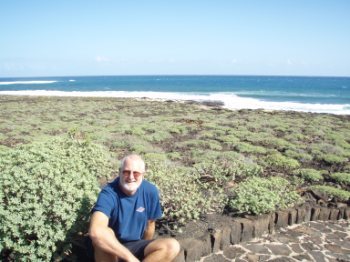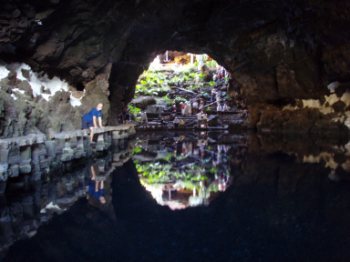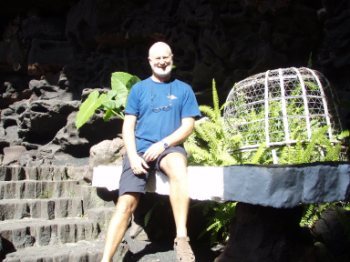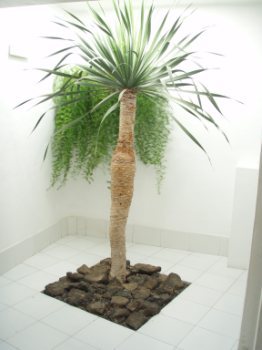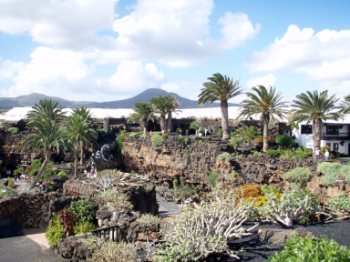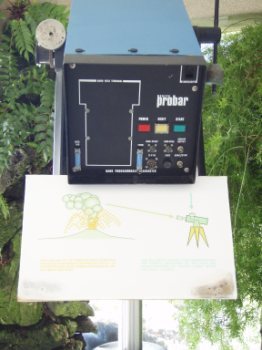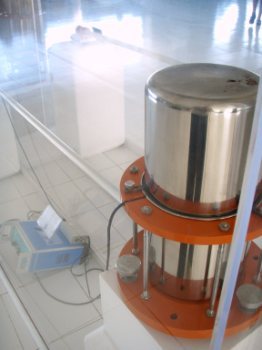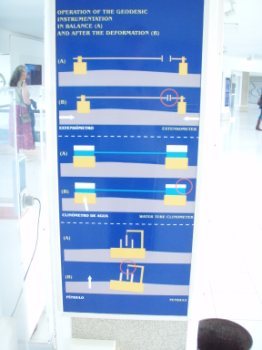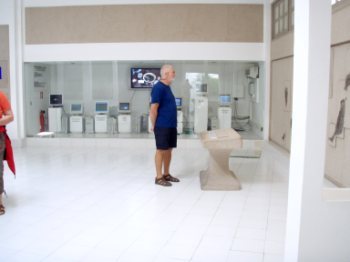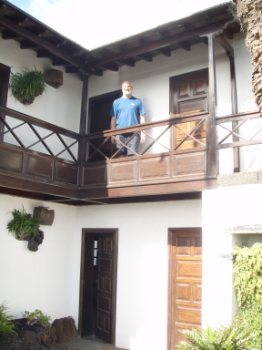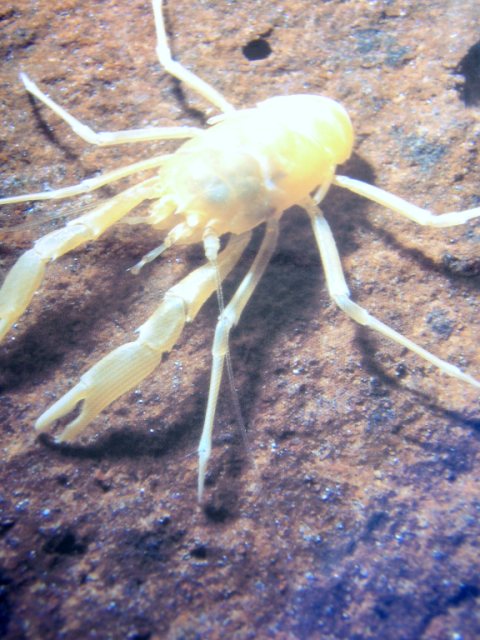Jameos del Agua

|
Jameos del Agua
We drove north and saw spectacular rollers hitting a sandy beach that fronted fertile alluvial plain covered in plant life. Bear with the backdrop to Jameos del Agua. Me by what I thought was a lobster, what a surprise I had. After paying at a small booth, we started down some steep winding stairs and caught the first glimpse of a subterranean world opened in 1966.
In the inside of the cave we saw a natural lake of transparent salt water where an endemic species of the island lives in: it´s a species of a minuscule, blind albino crab, no one knows why they are there as they normally live in very deep water. It was the image of that crab that the artist Cesar Manrique chose to create as the symbol of the Jameos del Agua, (I'm standing next to above). Bear sitting studying the crabs - he's on the far right. Bear leaning over to see them from the side path. The Jameos del Agua are situated in the North of Lanzarote and are part of the volcanic system of the Atlantis cave formed by the eruptions of the volcano La Corona 3 million years ago. Jameo is an aborigine word that means part of a volcanic tube where the roof has collapsed as result of the accumulated gases. This creates a circular cavity open to the day light. Two orifices and the section of the tube where the magma came through, constitute the basis of the formation of the Jameos del Agua. The Jameos del Agua are entered through the Jameo Chico which is used as restaurant and connected with the bigger jameo (Jameo Grande) by a pass of 100m long and 12m wide crossing the lake where the Munidopsis Polymorpha or "jameito" (the albino crab) live. The Jameo Grande is a wonderful garden of rich vegetation and a terrific artificial pool of turquoise water which is perfectly integrated in its environment and looks stunning making us so want to be in the Caribbean. At the end of this jameo there is an auditorium of extraordinary acoustics and capacity for an audience of 600. There is a programme of various cultural events taking place, concerts, ballet and theatrical performances. The first part of the volcanic tube in the seaward direction transits under the ocean bed in an extension of 1.5 km and is known as "the Atlantis Tunnel". It's recommended to visit the Jameos del Agua at night. The perfect illumination gives a certain grade of intimacy that allows you to enjoy the harmonic relation between art and the nature. Furthermore its a diverting place from usual "tourism" offering musical spectacles and a restaurant service with very good traditional dishes. All the while you hear tranquil music that you find yourself sitting just looking at the water.
The final touch sought by César Manrique (who died in 1992) to impress the visitor is the incorporation of a small number of extra elements, like the plants, water features and the pool, that have now become an intrinsic part of Jameos.
Bear by a simple basalt rock and plant made for a stunning enough display to stop him for a closer look. The tropical pool is a disused swimming pool. A view over the garden.
Bear wandering around the Volcano exhibition. A probar. The Atlantis Tunnel. From the Jameos you can visit the Casa de los Volcanes, a scientific centre known the world over, which was opened in the 80s, it interprets volcanic activity all over the globe.
A tilt meter. Pangea's Fracture. What a Geodesic Instrument measures .
Us in front of magic mirrors . Bear with all the computer equipment used to monitor volcanic activity, it reminded us of all the 'greenhouse' paraphenalia needed by Jack. A pretty way to house the exhibition.
I took this little flower while I was waiting for Bear to watch a video of an eruption. It's hard to imagine recent volcanic activity, sadly Gran Canaria had its last activity in 1971. Montserrat in the 90's with devastating results. Me by a bus in the car park as we left - with my name, available to hire at www.amandabus.com how cool is that ???Location: Road Orzola.Phone number: 928.84.80.20 Opening hours: Monday to Sunday from 9:30 to 19:00. Tuesday, Friday & Saturday from 19:00 to 02:00 Services: Bar and Restaurant from 13:00 to 15:30 and from 20:00 to 23:30 Entrance Fee: 8 Euros
All in all a unique experience, a surprising find made by natural causes that man has harnessed for the tourist. And it's got crabs. |
